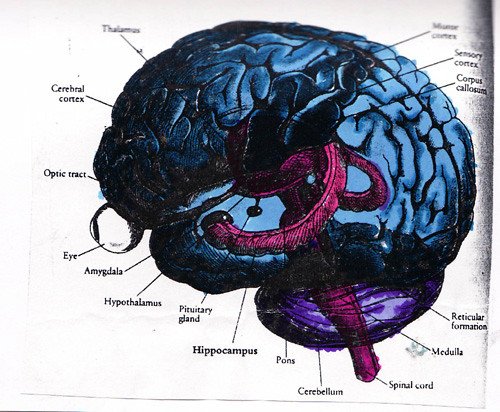Neurology: How Different Brain Waves Respond to Meditation
You must heard of meditation, or maybe participated in it and so many people would ask what meditation truly is. For some people, it is training the mind and the clearing it for the purpose of emotional and mental stability. So many people meditate using different approaches such as the Transcendental meditation, walking meditation, and so many more. If you meditate, then you should know the once you participate in. So how does the brain respond to meditation, or what great deed does meditation do to the brain?
To understand this, let's discuss what neural oscillations and brain waves, and to do that, let's discuss neurons. Neurons are cells in the brain that can be excited electrically, as they transfer electrolytes such as sodium and potassium in and out of their membranes, in what is referred to as action potential. Action potentials are signals that travel through synapses to to trigger either excitatory or inhibitory neurotransmitters. At the hospital, an Electroencephalogram (EEG) is used to measure action potentials as it detects tiny voltage fluctuation in the neurons.
Th fluctuation occurs at the cerebral cortex (the surface of the brain) made up of white matter which is fatty and wraps around the Axons of neurons, and gray matter which is basically the cerebral cortex. At the cerebral cortex, information is being processed there and it is made up of six layers of neurons. There are about 86 billion neurons in the brain and the neurons are grouped into regions fir different use.
Brain waves, in essence, result from the collective activity of individual neurons and groups of neurons, operating within milliseconds. They are characterized by their frequency (measured in hertz) and amplitude. Frequency signifies the number of wave cycles occurring per second, with one hertz equal to one wave in a second, while amplitude denotes the magnitude or intensity of the brain wave pattern. Brain waves can be categorized into five main types: delta, beta, alpha, theta, and gamma waves.
Each of these wave patterns is associated with various levels of consciousness. For example, delta waves are typically observed in stage 3 sleep, while alpha waves signify a state of focused attention. Gamma waves, on the other hand, are linked to memory and pattern recognition. This diversity in wave patterns arises because the brain doesn't function with a single, uniform wave direction; different activities in the brain correspond to distinct wave patterns.

flickr
The brain has different functions such as the Occipital cortex here visual information is being processed, the temporal cortex where auditory information is processed, and so on, and depending on the information that the brain receive there are different patterns within the brain. Identifying brain wave patterns have to do the region of the brain, the time frame, and what the person is doing at that point.
The delta brain wave is the slowest of the basic brain wave rhythm but there are other brain waves lesser than 1 hertz and they are known as Infra-slow activity and delta wave oscillation is between 1 and 4 hertz. Delta wave comes from the fifth layer of neurons inside the cerebral cortex, and the thalamus modifies the spacial nature of the delta waves in the cortex.
The delta wave range is usually seen during drowsiness and in stage 3 sleep but then, a study showed that Delta wave was experienced in REM sleep and Non-REM sleep where it was said to come from the medial occipital regions while REM sleep delta wave come from the Temporal Occipital Regions. Dela wave have been observed in people who meditate although this hasn't been studied in detail.
Theta waves present another facet of brain wave dynamics. These waves can be categorized into cortical theta waves and hippocampal theta waves, originating from the hippocampus, a brain region closely associated with short-term memory. Theta waves are linked to relaxation, creativity, spatial navigation, early-stage sleep, and focused attention.
Theta waves origin in the cerebral cortex isn't well established yet but with researches, evidences have been pointing to the prefrontal cortex of the frontal cortex, and the mid line regions of the brains which includes the angular singular cortex as well as the posterior singular cortex. These cortises are involved in high brain activities and when they are monitoring other processes in the brain. When it comes to meditation, Theta waves are seen in all types meditators and are seen more in meditators that are experienced. If meditation then has to do with listening to heartbeat or breathing, then these areas are going to be involved since the brain is monitoring itself.
Alpha brain waves, with frequencies ranging from 8 to 12 hertz, are often referred to as the posterior dominant rhythm. They predominantly manifest in the posterior regions of the brain, including the occipital, parietal, and temporal areas. Alpha waves are associated with a state of alertness and focus in humans. Given that meditation is a practice that heightens alertness and concentration, it's no surprise that alpha brain waves are commonly observed in meditators. These waves reflect the brain's state of balance and engagement during meditation sessions.
In essence, meditation unlocks the brain's potential to harmonize with different brain wave patterns, leading to profound mental and emotional effects. So when next you engage in meditation, remember that it's not just a practice of the mind but a symphony of neural oscillations in your brain.
Reference
https://www.ncbi.nlm.nih.gov/pmc/articles/PMC8633885/
https://www.ncbi.nlm.nih.gov/pmc/articles/PMC4471247/
https://www.ncbi.nlm.nih.gov/pmc/articles/PMC6312586/
https://www.sciencedaily.com/releases/2010/03/100319210631.htm
https://www.ncbi.nlm.nih.gov/pmc/articles/PMC3541490/
https://www.ncbi.nlm.nih.gov/books/NBK10996
https://www.ncbi.nlm.nih.gov/pmc/articles/PMC3538094
https://www.frontiersin.org/articles/10.3389/fnins.2018.00178/full
https://www.frontiersin.org/articles/10.3389/fneur.2019.00325/full
https://www.jneurosci.org/content/39/27/5244

Post manually reviewed. 😊
Yay! 🤗
Your content has been boosted with Ecency Points, by @busted1.
Use Ecency daily to boost your growth on platform!
Support Ecency
Vote for new Proposal
Delegate HP and earn more
I totally agree. Meditation has helped me in keeping calm for years. Thanks for highlighting it's importance
Thanks for your comment!!
Pleasure 😍
Thanks for your contribution to the STEMsocial community. Feel free to join us on discord to get to know the rest of us!
Please consider delegating to the @stemsocial account (85% of the curation rewards are returned).
Thanks for including @stemsocial as a beneficiary, which gives you stronger support.